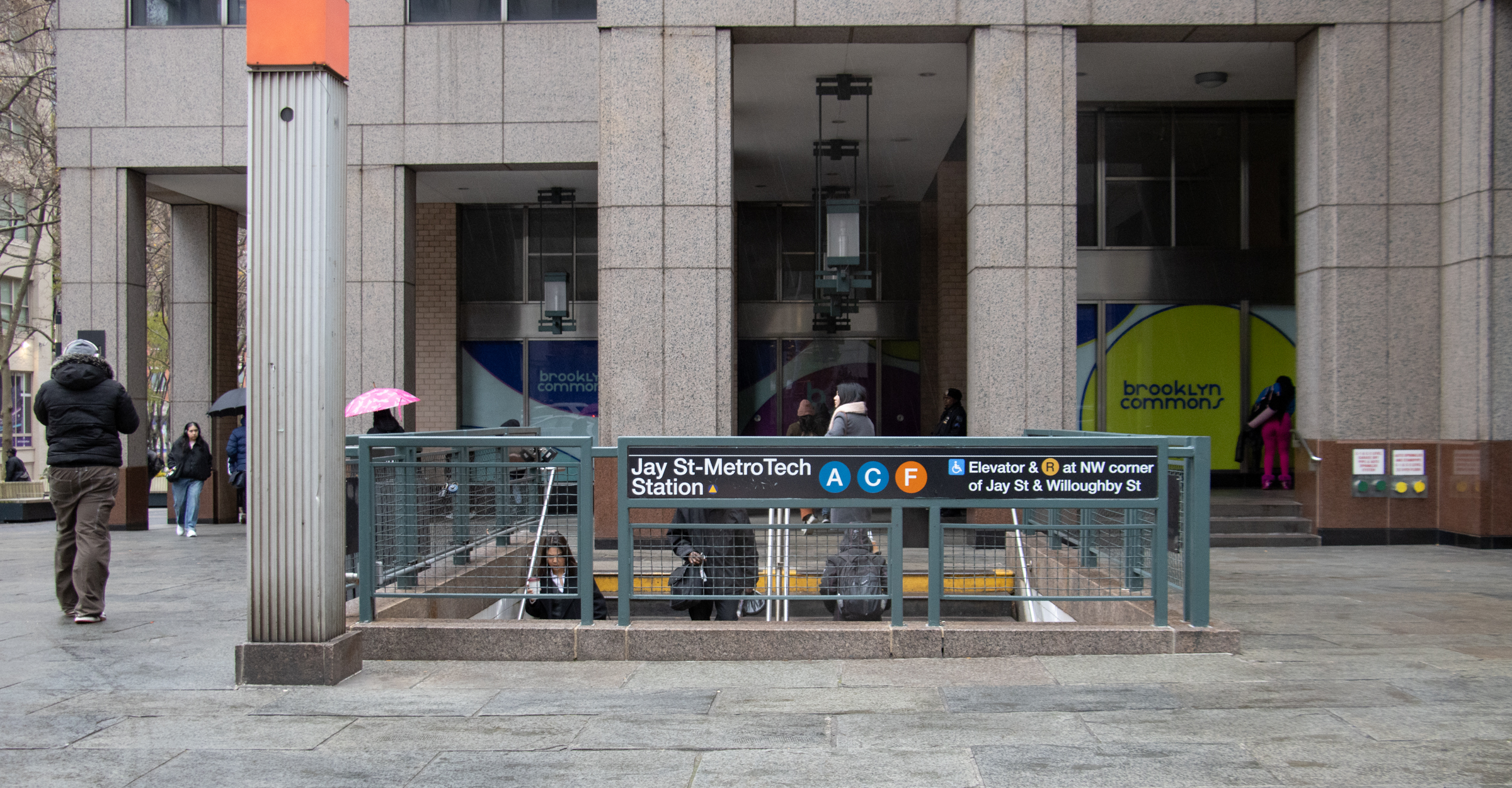Inside Third & Bond: Week 53
♪ ♪Dum dum dum da da dum dum. Dum dum dum da da dum dum. ___(fill in the blank)______ ♫ If you think the blank should be filled with Ice Ice Baby, please take a step back. If you think the blank should be filled with Under Pressure, please take a step forward. This week,…


♪ ♪Dum dum dum da da dum dum. Dum dum dum da da dum dum. ___(fill in the blank)______ ♫
If you think the blank should be filled with Ice Ice Baby, please take a step back. If you think the blank should be filled with Under Pressure, please take a step forward. This week, while the list of financial institutions under pressure is growing (et tu, Lehman Brothers?) and millions of particles are being rammed together underground, we are undergoing our own pressure test. We are testing our titan pile. We know, we know. We drew you in with Vanilla Ice/Queen and just when you thought this post was going to be a fun sing-along it turns out to be about piles…again! But this is cool stuff. Promise…
 First the background: We are using titan piles within 15′ of our two neighboring buildings. Our team of engineers thought it best to be extra cautious when approaching these old structures so we are using piles that cause less vibration than the timbers (btw, those are finished). Titan piles are drilled instead of pounded into the ground. They consist of steel casings from which the soil is cleaned out and then the interior is reinforced with steel and grout. Per NYC Building Code, titan piles must undergo testing. (All of the photos are of the testing.) Before the testing starts, the test pile and four reaction piles are screwed into the ground. Concrete is used to keep the reaction piles, which go 40′ into the ground, snugly in place.
First the background: We are using titan piles within 15′ of our two neighboring buildings. Our team of engineers thought it best to be extra cautious when approaching these old structures so we are using piles that cause less vibration than the timbers (btw, those are finished). Titan piles are drilled instead of pounded into the ground. They consist of steel casings from which the soil is cleaned out and then the interior is reinforced with steel and grout. Per NYC Building Code, titan piles must undergo testing. (All of the photos are of the testing.) Before the testing starts, the test pile and four reaction piles are screwed into the ground. Concrete is used to keep the reaction piles, which go 40′ into the ground, snugly in place.
 The titan is like the middle dot on the five-side of a die (aka dice for you pluralists out there) surrounded by the reaction piles. For the test, a hydraulic jack is put on top of the titan and then a couple of steel beams are added on top of that. The jack pushes up on the beam, which is held in place by the reaction piles, resulting in a downward force on the titan. The pressure from the jack is gradually increased and then the inspector waits to see if the titan pile moves and how much. The load to be tested on a pile is 200% of the load it is designed to carry. So, our engineer thinks that a 30-ton pile is sufficient to deal with the force of our building in the soil we have, but we are testing it up to 60 tons. (Imagine, that’s 60 Volkswagen Beetles, or 60 hippos, or $54 million dollars in $1 bills…)
The titan is like the middle dot on the five-side of a die (aka dice for you pluralists out there) surrounded by the reaction piles. For the test, a hydraulic jack is put on top of the titan and then a couple of steel beams are added on top of that. The jack pushes up on the beam, which is held in place by the reaction piles, resulting in a downward force on the titan. The pressure from the jack is gradually increased and then the inspector waits to see if the titan pile moves and how much. The load to be tested on a pile is 200% of the load it is designed to carry. So, our engineer thinks that a 30-ton pile is sufficient to deal with the force of our building in the soil we have, but we are testing it up to 60 tons. (Imagine, that’s 60 Volkswagen Beetles, or 60 hippos, or $54 million dollars in $1 bills…)
 The test starts with a 7.5-ton load. Fifteen minutes later, the load is increased to 15-tons. It continues like this until we finish the 30-ton test (which is 100% of the design load). Then the wait between increasing the load is extended from 15 minutes to an hour. We do that from 125% to 200% of the 30-ton design load (i.e., 60-ton load). Then we hold that load for 12 hours. The inspector will check it a couple of times after this 12-hour wait to make sure it is settled. If it is still creeping, that is if the position of the pile moves ~3000th of an inch then it is not ready yet for the long-hold. If it is at ~1000th of an inch, then we can start the 12-hour hold. If we meet the requirements of the 12-hour hold, then we are good to continue with the titan piles. If we don’t, or if we fail some time before the 12-hour hold, then it is back to the drawing board.
The test starts with a 7.5-ton load. Fifteen minutes later, the load is increased to 15-tons. It continues like this until we finish the 30-ton test (which is 100% of the design load). Then the wait between increasing the load is extended from 15 minutes to an hour. We do that from 125% to 200% of the 30-ton design load (i.e., 60-ton load). Then we hold that load for 12 hours. The inspector will check it a couple of times after this 12-hour wait to make sure it is settled. If it is still creeping, that is if the position of the pile moves ~3000th of an inch then it is not ready yet for the long-hold. If it is at ~1000th of an inch, then we can start the 12-hour hold. If we meet the requirements of the 12-hour hold, then we are good to continue with the titan piles. If we don’t, or if we fail some time before the 12-hour hold, then it is back to the drawing board.
It’s not quite as complicated as causing 600 million particles to collide. Nor will the failure of our test mean anything to the national or global economy. So, while the pressure’s not entirely off, we can be a little bit silly and keep singing, dum dum dum da da dum dum…
Inside Third & Bond: Week 42 [Brownstoner]
Inside Third & Bond: Week 51 [Brownstoner]
Inside Third & Bond: Week 50 [Brownstoner]
Inside Third & Bond: Week 49 [Brownstoner]
Inside Third & Bond: Week 48 [Brownstoner]
Inside Third & Bond: Week 47 [Brownstoner]
From our lawyers: This is not an offering. No offering can be made until an offering plan is filed with the Department of Law of the State of New York.”





http://en.wikipedia.org/wiki/Under_Pressure
Music debate meets pile-driving … only on Brownstoner.
They’ve not actually collided anything in the Large Hadron Collider yet. They just run some protons through the series of tubes…
Ah, it all makes sense now!
Both. Queen with David Bowie, or vice versa.
Wasn’t “Under Pressure” a David Bowie song, not a Queen song? Or am I crazy?